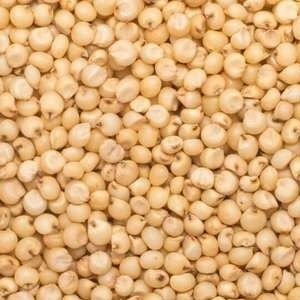Cereals
CEREALS
A cereals are a grass cultivated for it’s edible grains. Cereals are the world’s largest crops & are therefore staple foods. They include rice, wheat, rye, oats, barley, millet, and maize. Edible grains from other plant families, such as buckwheat and quinoa are pseudo-cereals.
Most cereals are annuals, producing one crop from each planting, though rice is sometimes grown as a perennial. Winter varieties are hardy enough to be planted in the autumn, becoming dormant in the winter, and harvested in spring or early summer; spring varieties are planted in spring and harvested in late summer.
The term cereal is derived from the name of the Roman goddess of grain crops and fertility, Ceres. Cereals were domesticated in the Neolithic, some 8,000 years ago. Wheat and barley were domesticated in the Fertile Crescent; rice was domesticated in East Asia, and sorghum and millet were domesticated in West Africa. In the 20th century, cereal productivity was greatly increased by the Green Revolution. This increase in production has accompanied a growing international trade, with some countries such as United State of America, India, Argentina, Brazil & Australia producing large portions of the cereal and supply to other countries.
Cereals provide food eaten directly as whole grains, usually cooked, or they are ground to flour and made into bread, porridge, and other products. Cereals have a high starch content, enabling them to be fermented into alcoholic drinks such as beer.
INTERNATIONAL CUISINE
Cereals are a staple in many international cuisines, often used in a variety of dishes ranging from breakfast to dinner and even desserts. Here are some examples from different cultures:
American Cuisine:
Breakfast Cereals: Popular American breakfast cereals include cornflakes, frosted flakes, Cheerios, and Lucky Charms.
Cornbread: Made from cornmeal, a cereal grain, cornbread is a staple in Southern cuisine.
Italian Cuisine:
Polenta: A dish made from coarsely ground cornmeal, cooked with broth to a creamy consistency. It can be served soft or cooled and sliced.
Farro Salad: Farro, an ancient wheat grain, is often used in salads mixed with vegetables, herbs, and vinaigrette dressing.
Indian Cuisine:
Upma: A savory breakfast dish made from semolina (a coarse wheat flour), cooked with spices, vegetables, and sometimes nuts.
Poha: Flattened rice flakes cooked with onions, peas, and spices, popular for breakfast in regions like Maharashtra.
Mexican Cuisine:
Tamales: Corn masa dough stuffed with various fillings, wrapped in corn husks or banana leaves, and steamed. It’s a traditional Mesoamerican dish.
Atole: A warm, thick drink made from masa harina (corn flour), water, and typically flavored with cinnamon, vanilla, or chocolate.
Japanese Cuisine:
Rice Balls (Onigiri): Cooked Japanese rice shaped into triangles or spheres and often wrapped in seaweed, sometimes filled with pickled plum, fish, or other ingredients.
Soba Noodles: Thin noodles made from buckwheat flour, often served cold with a dipping sauce or in a hot broth.
Middle Eastern Cuisine:
Tabbouleh: A salad made from bulgur (cracked wheat), parsley, tomatoes, onions, mint, and dressed with lemon juice and olive oil. It’s popular in many Middle Eastern countries.
Kibbeh: A Levantine dish made of bulgur, minced onions, and finely ground meat (often lamb, beef, or goat). It can be shaped into balls or patties and either baked, grilled, or fried.
Chinese Cuisine:
Congee: A type of rice porridge made by boiling rice in water until it breaks down into a thick, smooth texture. It can be served plain or with various toppings like preserved eggs, pickled vegetables, or meats.
Fried Rice: Cooked rice stir-fried with vegetables, eggs, and often meat or seafood. It’s a versatile dish that can incorporate leftover rice and various ingredients.
These are just a few examples, but cereals and cereal-based products are incredibly versatile and can be found in countless dishes across the globe.
INDIA
India is the largest producer as well as the largest exporter of cereals & its products worldwide including wheat, rice, sorghum, millet (Bajra), barley, maize & other cereals.
The huge demand for cereals in the global market is creating an excellent environment for the export of Indian cereal products.
CEREALS PRODUCTION IN INDIA
Cereal production in India varies from year to year depending on several factors such as weather conditions, government policies, market demand, and agricultural practices. India is one of the world’s largest producers of cereals, and the production levels of major cereal crops like rice, wheat, maize, and millets contribute significantly to the country’s food security and economy.
Here’s a general overview of cereal production trends in India over the past few years:
• Rice: Rice is the dominant cereal crop in India, and the country is one of the largest producers globally. Rice production in India fluctuates annually based on monsoon rainfall, irrigation availability, and government policies. Production typically ranges from around 100 to 120 million metric tons per year.
• Wheat: Wheat is the second most important cereal crop in India. Production levels are influenced by factors such as winter weather conditions, government procurement policies, and market demand. India’s wheat production typically ranges from 90 to 110 million metric tons annually.
• Maize: Maize production in India has been increasing steadily due to rising demand from various sectors such as food, feed, and industrial uses. Production levels vary depending on factors like weather conditions, input availability, and market prices. Maize production in India ranges from around 25 to 30 million metric tons per year.
• Millets: Millets such as pearl millet (bajra), finger millet (ragi), and sorghum (jowar) are important traditional cereal crops in India, particularly in dryland areas. Production levels vary depending on rainfall patterns and agronomic practices. Millet production in India ranges from around 20 to 25 million metric tons annually.
These production figures are approximate and can vary from year to year based on the aforementioned factors. Additionally, government initiatives and support programs aimed at boosting cereal production, improving agricultural practices, and enhancing farmer incomes also influence production levels.
CEREALS EXPORT FROM INDIA
India is a significant producer of cereals, India export various types of cereals to many countries, an overview of cereal exports from India:
• Basmati Rice: India is renowned for its aromatic Basmati rice, which is highly prized in international markets. Basmati rice exports from India contribute significantly to the country’s total cereal export value. Major export destinations for Indian Basmati rice include countries in the Middle East, Europe, and North America.
• Non-Basmati Rice: Apart from Basmati rice, India also exports non-Basmati rice varieties to countries in Africa, Asia, and the Middle East. These exports cater to diverse consumer preferences and budgetary constraints in different markets.
• Wheat: India occasionally exports wheat surplus to its domestic requirements. However, wheat exports from India are relatively limited compared to other major wheat-producing countries like the United States, Canada, and Australia. Export destinations for Indian wheat include neighboring countries in South Asia and regions with temporary shortages.
• Maize: India exports maize (corn) to various countries for both human consumption and animal feed purposes. Export volumes of maize from India vary depending on domestic production levels and global demand trends. Major export markets for Indian maize include Southeast Asia, the Middle East, and Africa.
• Other Cereals: India also exports small quantities of other cereals such as millets (bajra, ragi, jowar) and sorghum. These exports cater to niche markets and specific consumer preferences in countries with significant Indian diaspora populations or cultural ties.
It’s worth noting that India’s cereal exports are subject to various factors such as government policies, international trade agreements, global market prices, and domestic demand-supply dynamics. Additionally, export volumes can fluctuate from year to year based on factors like weather conditions, crop yields, and competitive pressures from other exporting countries.
INDIA CUISINE
Indian cuisine boasts a rich variety of cereals that are staples in many regional diets. Here are some prominent ones:
• Rice: Rice is a fundamental cereal in Indian cuisine and is consumed in various forms such as boiled rice, biryani, pulao, and idli/dosa batter.
• Wheat: Wheat is another essential cereal in India, used to make chapatis, parathas, puris, and various other Indian bread varieties.
• Maize (Corn): Corn is widely used in Indian cuisine, especially in states like Gujarat and Maharashtra, where dishes like Makki ki Roti (corn flatbread) are popular.
• Millet: Millets such as pearl millet (bajra), finger millet (ragi), foxtail millet (kangni), and sorghum (jowar) are traditional cereals consumed in various parts of India. They are used to make rotis, porridge, and other dishes.
• Barley: Barley is used in some regional cuisines, particularly in the form of barley flour for flatbreads or in soups.
• Oats: Oats have gained popularity in India in recent years due to their health benefits. They are used to make porridge, dosas, and various baked goods.
• Sago (Sabudana): Sago is derived from the pith of certain palm trees and is commonly used in Indian cuisine, particularly during fasting periods. It’s used to make dishes like Sabudana Khichdi and Sabudana Vada.
• Buckwheat (Kuttu): Buckwheat flour is commonly used during fasting periods and is used to make dishes like Kuttu ki Roti and Kuttu ki Puri.
These cereals form the backbone of many traditional Indian dishes and provide a diverse range of flavors, textures, and nutritional benefits to the cuisine.
OUR POPULAR CEREAL PRODUCTS

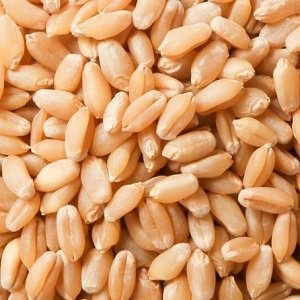
Wheat
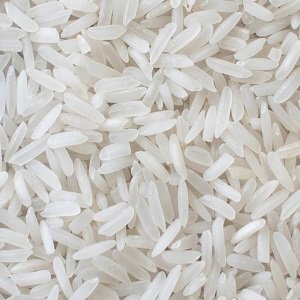
Rice
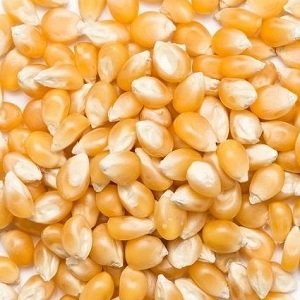
Maize

Pearl Millet (Bajra)
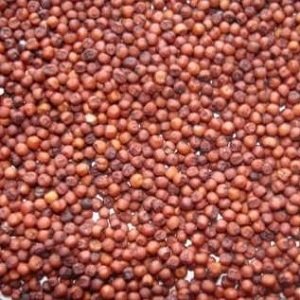
Finger Millet (Ragi)
